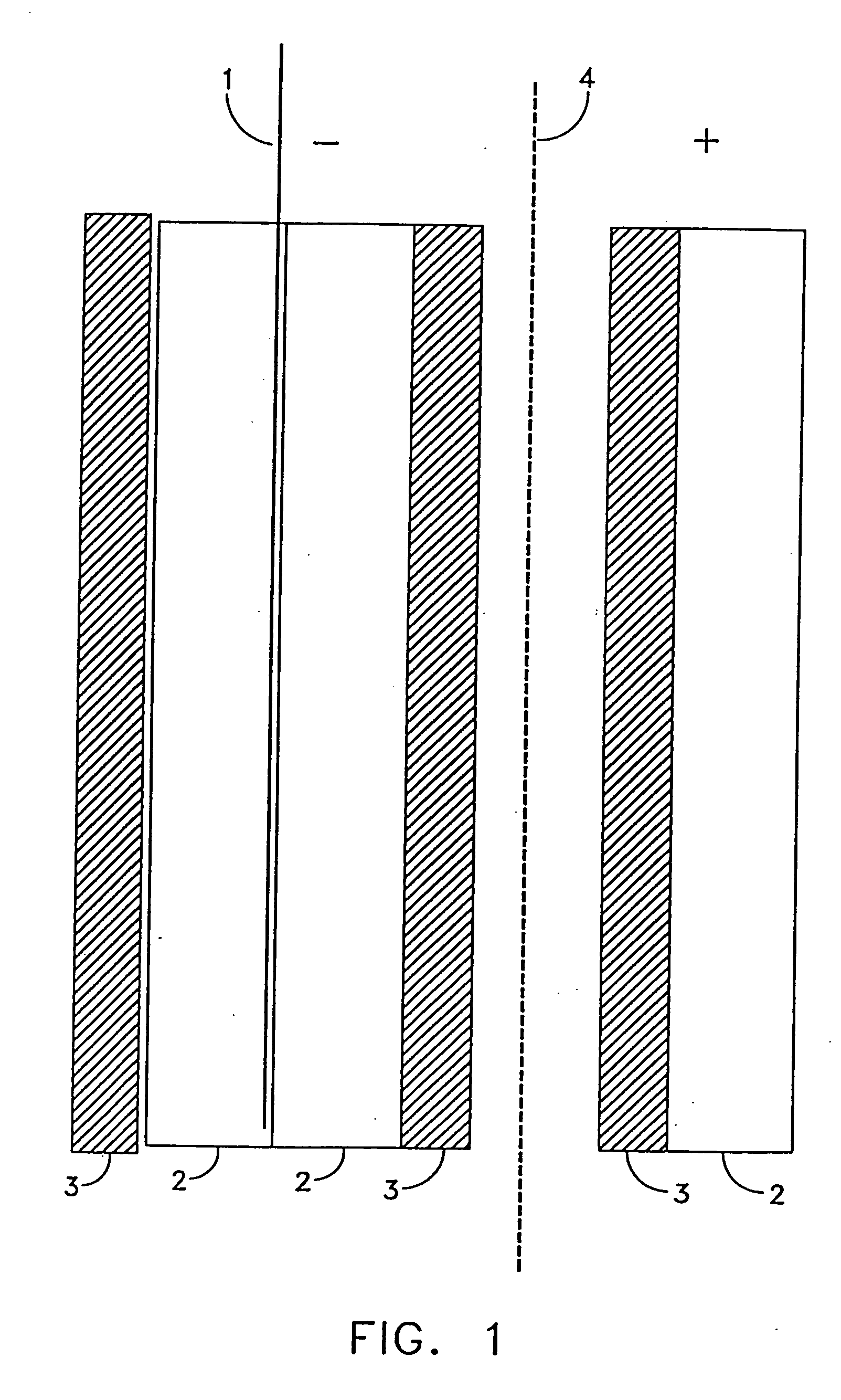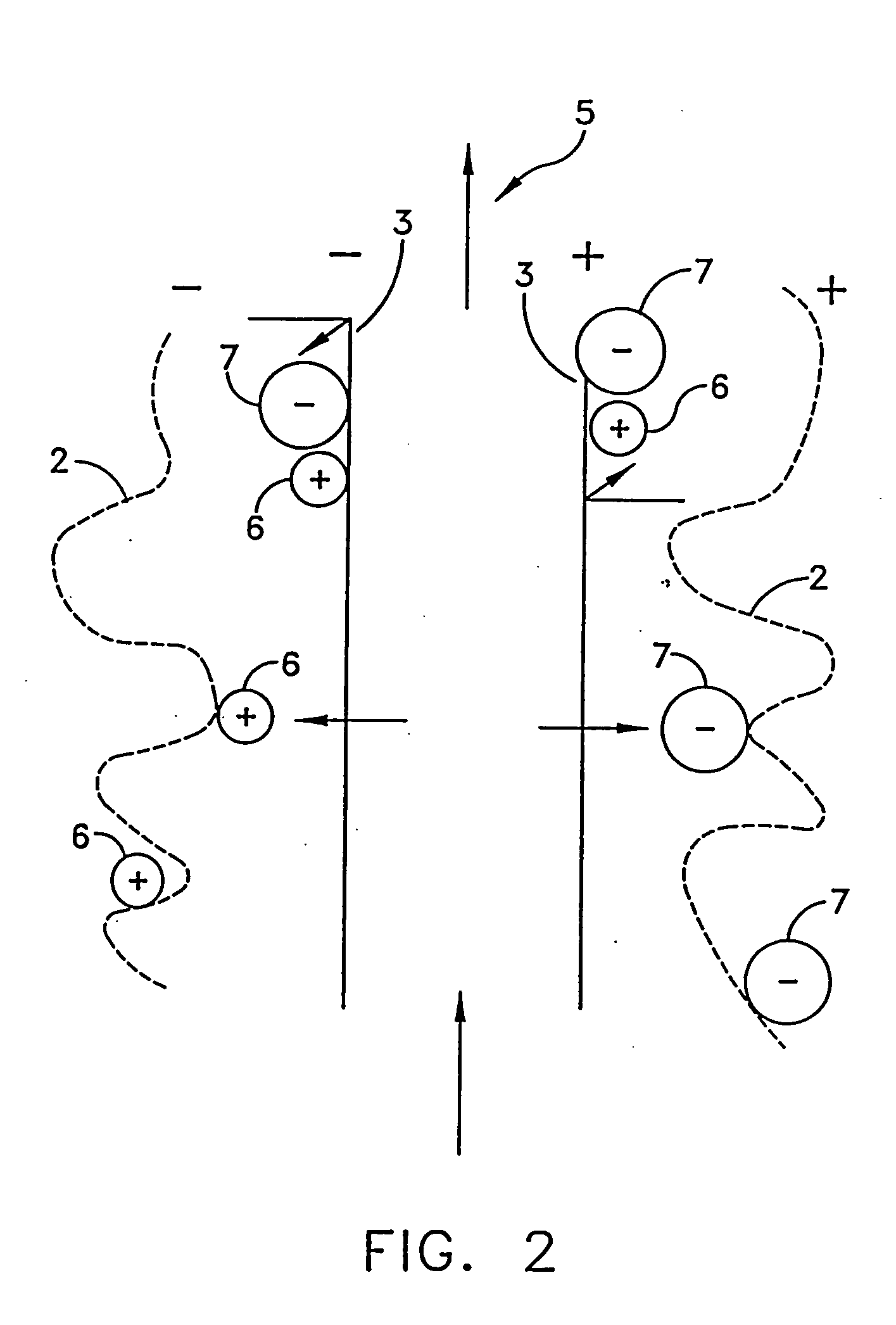Charge barrier flow-through capacitor
a flow-through capacitor and charge barrier technology, applied in the field of flow-through capacitors, can solve the problems of reducing the efficiency of flow-through capacitors of the prior art, reducing the efficiency of flow-through capacitors, and causing double deleterious effects, and achieves energy-efficient purification of concentrated fluids, low resistance-capacitance, and large increase in ionic efficiency
- Summary
- Abstract
- Description
- Claims
- Application Information
AI Technical Summary
Benefits of technology
Problems solved by technology
Method used
Image
Examples
example 1
[0093] The flow-through capacitor of FIG. 10 is prepared using electrodes composed of 95% carbon black and 5% of a polymer PTFE or similar polymer. Charge barriers are composed of permselctive membranes. In the capacitor of FIG. 10, a cation exchange membrane, such as RAIPORETM™ 1010 membrane with fixed benzyl sulfonic acid groups, is placed touching and adjacent to the negative electrode. An anion exchange membrane, in this case, a RAIPORETM™ 1030 membrane with fixed phenyl tetramethyl ammonium groups, is placed touching and adjacent to the positive electrode. A 0.003 inch thick filtration netting is placed between the two oppositely-charged permselective membranes and to form the flow path. The capacitor is charged at constant current, up to a voltage limit of 1 volt. Seawater flowing between the membranes is purified to 12%. In order to reach a purity of 99%, several capacitors are used in series or stages with series flow to reduce the salinity to 6000 ppm. An additional flow-th...
example 2
[0094] The flow-through capacitor of Example 1 is used at a flow rate of less than 1 ml / minute / gram of carbon, for example, 0.1 ml / minute / gram of carbon, to achieve greater than 90% purification of a 35,000 ppm salt solution.
example 3
[0095] The flow-through capacitor of Example 1 is coupled through an inductor in order to recover energy during discharge. This energy is used to charge a second capacitor during its purification cycle. Maximum charging voltage of both capacitors is kept below 0.7 volts, in order to minimize energy usage. Capacitors may be charged either at constant voltage, constant current, or at constantly increasing voltage, or constantly increasing current. Optionally, capacitors may be charged in series in, order to increase the voltage for maximum energy recovery and power supply efficiency.
PUM
| Property | Measurement | Unit |
|---|---|---|
| porosity | aaaaa | aaaaa |
| thick | aaaaa | aaaaa |
| thick | aaaaa | aaaaa |
Abstract
Description
Claims
Application Information
 Login to View More
Login to View More - R&D
- Intellectual Property
- Life Sciences
- Materials
- Tech Scout
- Unparalleled Data Quality
- Higher Quality Content
- 60% Fewer Hallucinations
Browse by: Latest US Patents, China's latest patents, Technical Efficacy Thesaurus, Application Domain, Technology Topic, Popular Technical Reports.
© 2025 PatSnap. All rights reserved.Legal|Privacy policy|Modern Slavery Act Transparency Statement|Sitemap|About US| Contact US: help@patsnap.com



